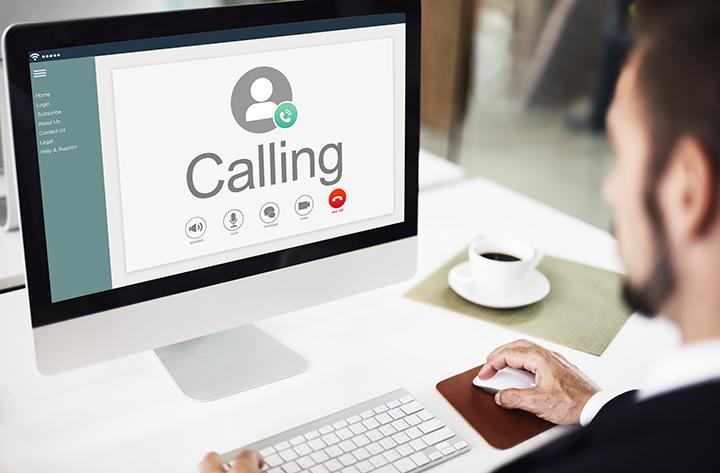Tips for hosting virtual events

Digital events are quickly becoming part of the ‘new normal’ we find ourselves in. Events such as the SCA’s Re:co Symposium & Expo, World Tea Expo, North American Tea Conference, Pack Expo, Sintercafé and even the SCTA Forum, have all gone or are going virtual for 2020 due to safety and travel concerns amid the ongoing pandemic. And we should expect to see the same for the majority of events being held for the rest of the year — and possibly even into early 2021.
So, what makes a virtual event a worthy substitution for the real thing? Between myself and T&CTJ editor Vanessa Facenda, we’ve attended a significant amount of virtual events this year alone and have compiled some ‘dos and don’ts below — that is, sort of a ‘what works well’ based on our experiences.
Do:
- Consider a combination of pre-recorded and live sessions: If the virtual event lasts all day (6+ hours) or over the course of several days, and has many speakers, consider pre-recording some presentations in advance and combine them with live Q&A sessions. This works well when the event has presenters from around the world participating as it reduces the possibility of technical or connectivity issues during the presentation and helps to keep the event running on time (or as close to on time as possible).
- Get audiences involved: Live polls and questionnaires are a good way of getting audiences fully engaged with an event and allows attendees to gain an insight into what their peers are thinking or what their opinions are on a subject. The three-part AMI Plastics and the Pandemic Virtual Forum conducted live on-screen polls during their panel discussions, and it worked well – as do the ongoing World Coffee Producers Forum webinars.
- Hold Q&As: Encourage as much engagement as possible between audience and speakers. The Plastics & the Pandemic Forum held a Q&A session immediately following each speaker and panel discussion, while the virtual Re:co Symposium offered Q&As in a separate virtual room after the presentation sessions, which worked well as an option for those who wanted to hear more in-depth responses.
- Offer variety in longer event programmes: While it may not be possible for smaller events, for those that do span a few days or even a week, it would be a good idea to incorporate presentations/talks; discussions amongst speakers; chat rooms and tea/coffee parties; experience sessions; or virtual demos (for equipment manufacturers especially). The Specialty Coffee Association (SCA), for example, offered attendees the opportunity to order Home Sensory Experience Kits in advance of the virtual Re:co Symposium so they could participate in the virtual sensory demonstration.
- Encourage tea/coffee breaks just the same as at a physical event: It has already been proven that taking short breaks from a screen every hour or so lessens eye strain and helps improve mental wellbeing, as well as concentration. Virtual event attendees will feel more refreshed for the next part of an event after a good break, even if they can’t leave the house! And we’re definitely in the right industry to be encouraging wellness and hydration.
- Record sessions: Offering playbacks of specific talks or sessions will be great for those who may have missed them but did originally register for the online event, for those who have a time conflict (e.g., 9:00am GMT in the UK is 5:00am EDT in New York while 3:00pm EDT in NY is 4:00am JST in Japan), and for those who would like to review the presentation again.
- Plan for technical issues: Unfortunately, there may be instances where this is unavoidable so taking this into consideration and setting up contingency plans is a must.
Don’t:
- Overcomplicate the virtual platform: Detail is always great and if you’re going to digitise your physical events space, even better, but make sure navigation is clear and concise so nobody is left staring bewildered at their screen — it’s not as easy being unable to walk up to someone and ask them the way to go! Accessibility is key in this area.
- Schedule too many presentations: Sometimes too much information can be a bad thing. During this pandemic, we’re definitely experiencing information overload – you only need turn on the news for that. Detailed presentations and speeches are great but in small bouts (such as limiting the presentations to about four in a day depending on the length of each one), so spreading them out will work in your favour. Furthermore, rather than a one-day 7+ hour plus event, consider a two-day 3-4-hour event.
- Hold sessions for more than two hours without a break: Similar to the above point, concentration is likely to wane after the two-hour mark (there is such a thing called Zoom Fatigue!) so shorter sessions will work better for audience engagement.
There you have it! Hopefully we’ll be able to see each other face to face in the near future but for now, happy virtual hosting!
- Alex Rivers, digital editor, Bell Publishing.
Keep in touch via email: [email protected]
Twitter: @TCTradeJournal or LinkedIn: Tea & Coffee Trade Journal.




Virtual events are growing rapidly coze of their easy availability, easy access, affordability, and more. Those Do’s and Don’t are super valuable, gonna help beginners who knew to this and do those mistakes.
Thank you, we hope so!